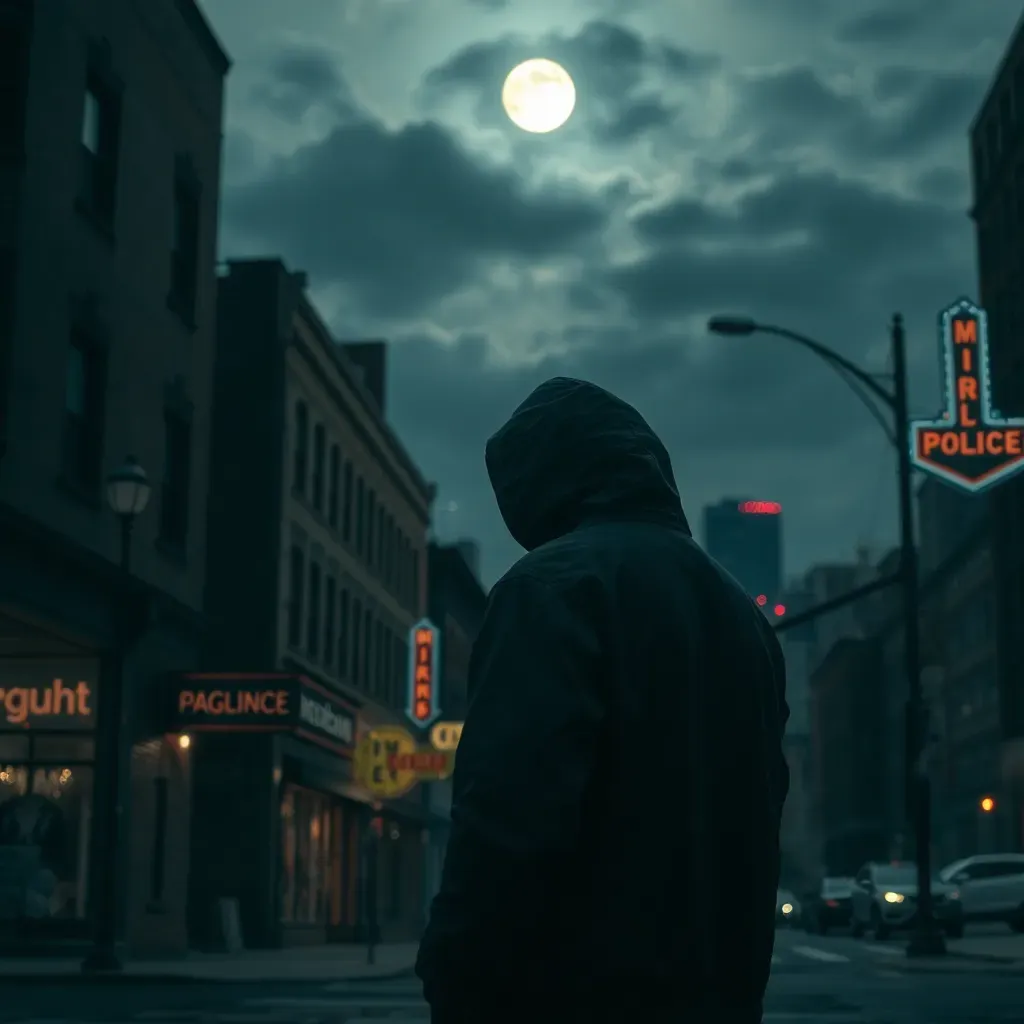Is Indianapolis dangerous? Shocking crime truths revealed
- Crime in US Cities: Where Does Indianapolis Stand?
- Breaking Down Indianapolis Crime Statistics: The Numbers You Need to Know
- The Safest Neighborhoods in Indianapolis: Where You Can Chill Without Worry
- The Most Dangerous Neighborhoods in Indianapolis: Areas to Watch Out For
- Real Voices: What Locals and Visitors Say About Safety in Indianapolis
- How Indianapolis Police and Community Are Fighting Crime
- Practical Safety Tips for Living, Visiting, or Moving to Indianapolis
- Comparing Indianapolis to Other Risky Towns in the US: Is Indy Really That Bad?
- What You Should Take Away About Indianapolis Danger Levels
- Sources and Further Reading
Crime in US Cities: Where Does Indianapolis Stand?
Indianapolis is one of many cities in the US with a mixed reputation when it comes to safety. To get a clear picture of how dangerous Indianapolis really is, it helps to understand what "dangerous" means in the context of American cities. Crime rates vary widely across the country, and cities often face challenges tied to poverty, unemployment, and social issues.
When compared nationally, Indianapolis ranks among the cities with higher crime rates, especially in terms of violent crime. It’s often listed in the top 10 most dangerous cities in the US based on FBI data, but these rankings don’t tell the whole story. The city has areas that are quite safe alongside neighborhoods where residents and visitors should exercise caution.
The main types of crime affecting Indianapolis, like many urban centers, fall into two broad categories: violent crime (including assaults, robberies, and homicides) and property crime (such as burglary, theft, and vehicle break-ins). Factors driving these crimes include economic hardship, drug-related issues, and mental health challenges.
Understanding these dynamics helps frame the safety landscape of Indianapolis beyond just numbers, giving context to why some neighborhoods face more challenges than others.
Breaking Down Indianapolis Crime Statistics: The Numbers You Need to Know
Looking at the latest official crime statistics provides a clearer view of the danger level in Indianapolis. According to recent reports, the city experiences a significant number of violent crimes annually, with homicide rates notably above the national average. Property crimes also occur frequently, with theft and burglary being common.
To put it in perspective, the odds of becoming a victim of violent crime in Indianapolis hover around 1 in 75, while the chance of property crime is about 1 in 20. These figures are higher than many other US cities but still vary widely depending on the neighborhood.
Crime rate terms like "violent crime rate" and "property crime rate" refer to the number of reported incidents per 100,000 residents. For residents and visitors, these rates translate into real-world risks that can be mitigated by awareness and choosing safer areas.
Visual tools like crime heat maps show clusters of incidents, highlighting which parts of the city experience more activity. These maps are useful for quickly grasping the safety landscape and planning routes or housing choices accordingly.
The Safest Neighborhoods in Indianapolis: Where You Can Chill Without Worry
Despite some sketchy spots, Indianapolis boasts several neighborhoods where safety and community pride shine. These areas offer residents and visitors a chance to enjoy the city with less worry.
- Zionsville: Known for its small-town feel, Zionsville has a growing population and very low crime rates. The community vibe is friendly, with plenty of local events and outdoor spaces.
- Meridian-Kessler: This residential area is popular for its charming homes and good schools. Crime incidents here are rare, making it a favorite for families.
- Geist: Waterfront amenities and outdoor activities define Geist. Its peaceful streets and active neighborhood watch programs contribute to a strong sense of security.
- Fishers: A suburban area with low crime, Fishers hosts community events and has a reputation for safety and family-friendly living.
- Carmel: Known for being upscale and well-policed, Carmel combines strong community pride with effective crime prevention efforts.
These neighborhoods benefit from consistent police presence, active community programs, and demographics that support lower crime rates. Newcomers looking for safe spots should consider these areas and look for signs like well-lit streets, community engagement, and low rental turnover.
The Most Dangerous Neighborhoods in Indianapolis: Areas to Watch Out For
On the flip side, some neighborhoods in Indianapolis have earned reputations for being risky or dodgy, often due to economic struggles and higher crime reports.
- Bos (Broad Ripple area): This area sees frequent theft and drug-related activity, especially around nightlife spots. Visitors are advised to stay alert, particularly after dark.
- Midtown: High rates of violent crime and poverty-related issues mark Midtown. Residents often report concerns about safety during nighttime hours.
- Tuxedo Park: Known for drug-related arrests and property crimes, this neighborhood requires caution, especially for those unfamiliar with the area.
- Westside: Gang activity and violent incidents have been reported here, making it one of the more challenging parts of the city.
- Martindale: Housing difficulties and school system struggles coincide with crime hotspots, impacting community safety perceptions.
Economic factors like unemployment and limited resources contribute to these challenges. Police reports and community feedback highlight the importance of avoiding these areas after dark, traveling in groups, and staying vigilant.
Real Voices: What Locals and Visitors Say About Safety in Indianapolis
Source
Source
Source
Community attitudes often paint a mixed picture. Some voices emphasize the city's safety and friendly vibe, while others share cautionary tales about shady spots. This balance shapes how outsiders perceive Indianapolis and underscores the value of local knowledge.

How Indianapolis Police and Community Are Fighting Crime
The Indianapolis Police Department plays a key role in crime prevention, employing strategies like increased patrols in high-risk areas and community engagement programs. Neighborhood watches and youth outreach initiatives aim to build trust and reduce crime drivers.
Technology aids these efforts through crime maps and real-time reporting apps, allowing residents to stay informed and alert. Drug rehabilitation programs and mental health services also address root causes contributing to crime.
While challenges remain, there are success stories where coordinated efforts have led to safer streets. Residents are encouraged to participate in community meetings and report suspicious activity to support ongoing crime reduction.
Practical Safety Tips for Living, Visiting, or Moving to Indianapolis
Staying safe in Indianapolis involves simple, practical steps:
- Stay aware of your surroundings, especially in rough or unfamiliar neighborhoods.
- Secure your home with good lighting and locks.
- Use crime maps and police reports to plan routes and activities.
- Avoid walking alone after dark in areas known for incidents.
- If you witness or experience crime, report it promptly to authorities.
- Connect with local community groups for support and information.
Balancing enjoyment of the city with caution helps residents and visitors make the most of Indianapolis while minimizing risks.
Comparing Indianapolis to Other Risky Towns in the US: Is Indy Really That Bad?
| City | Violent Crime Rate (per 100k) | Property Crime Rate (per 100k) | Safety Ranking | Quality of Life |
|---|---|---|---|---|
| Indianapolis, IN | ~800 | ~3,500 | 10th most dangerous | Moderate; mixed neighborhoods |
| Detroit, MI | ~1,900 | ~4,000 | 1st most dangerous | Challenging; economic struggles |
| St. Louis, MO | ~1,900 | ~4,500 | 2nd most dangerous | Varied; some safe areas |
| Baltimore, MD | ~1,800 | ~4,200 | 3rd most dangerous | Mixed; ongoing revitalization |
Compared to these cities, Indianapolis has lower violent crime rates but still faces notable challenges. Its unique culture, growing economy, and community resilience offer positives that balance the risks. Interpreting crime data requires looking beyond numbers to understand local context.
What You Should Take Away About Indianapolis Danger Levels
Indianapolis presents a mixed safety landscape. While some neighborhoods are safe and family-friendly, others carry higher risks linked to economic and social factors. Making informed decisions means knowing your neighborhoods, staying alert, and using available resources.
Fear or hype shouldn’t drive your view of Indy. Instead, rely on facts, community insights, and practical safety measures. The city offers plenty to explore and enjoy if you take sensible precautions and connect with local networks.
Indianapolis holds a complex spot among US cities in terms of safety — it’s neither the worst nor the safest, but a place where awareness and preparation make all the difference.
Sources and Further Reading
- Reddit: Is Indianapolis actually safe in most areas?
- U.S. News: Living in Indianapolis, IN
- CrimeGrade: Safest Places in Indianapolis
- OnlyInYourState: Most Dangerous Places in Indianapolis
- WISH-TV: Most Dangerous Indianapolis ZIP Codes
- Freedom For All Americans: Indianapolis Crime Rate
- GIS Geography: Indianapolis Crime Map
- Suhre & Associates: Safest and Most Dangerous Neighborhoods in Indianapolis
What do you think about the safety in Indianapolis? Have you experienced any sketchy or safe moments in the city? How would you like to see the community improve safety? Share your thoughts, questions, or stories in the comments below!
 Crime rate in Indianapolis 2025: shocking trends you won’t believe
Crime rate in Indianapolis 2025: shocking trends you won’t believe Is it safe to walk in Indianapolis at night? The truth might shock you
Is it safe to walk in Indianapolis at night? The truth might shock youSi quieres conocer otros artículos parecidos a Is Indianapolis dangerous? Shocking crime truths revealed puedes visitar la categoría Indiana.

Leave a Reply